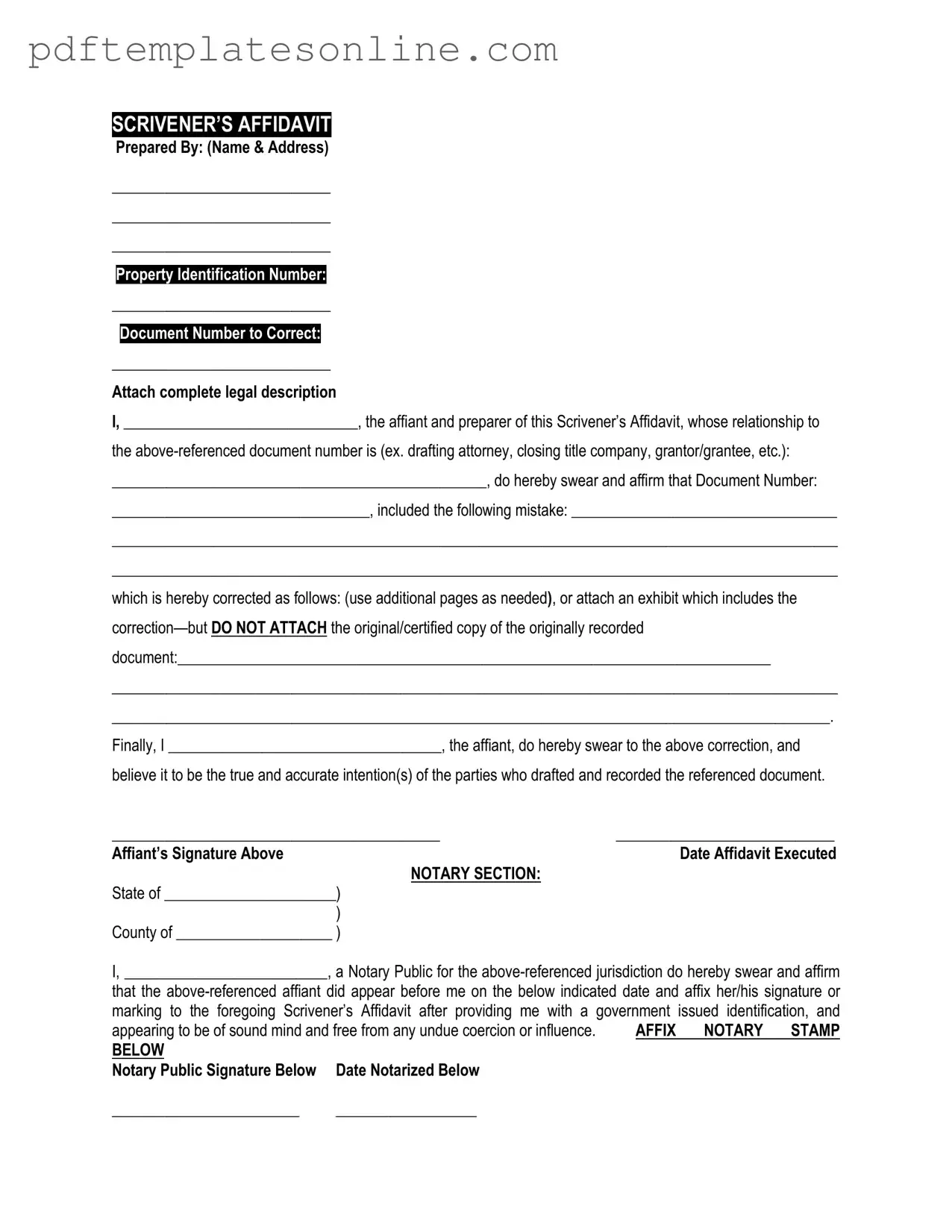Blank Scrivener's Affidavit Form
The Scrivener's Affidavit is a legal document used to clarify and confirm the accuracy of a written instrument, often in real estate transactions. This form serves to provide assurance that the details in the document are correct, helping to prevent misunderstandings. Understanding how to properly use this affidavit can streamline the process and protect all parties involved.
Access Scrivener's Affidavit Editor Now
